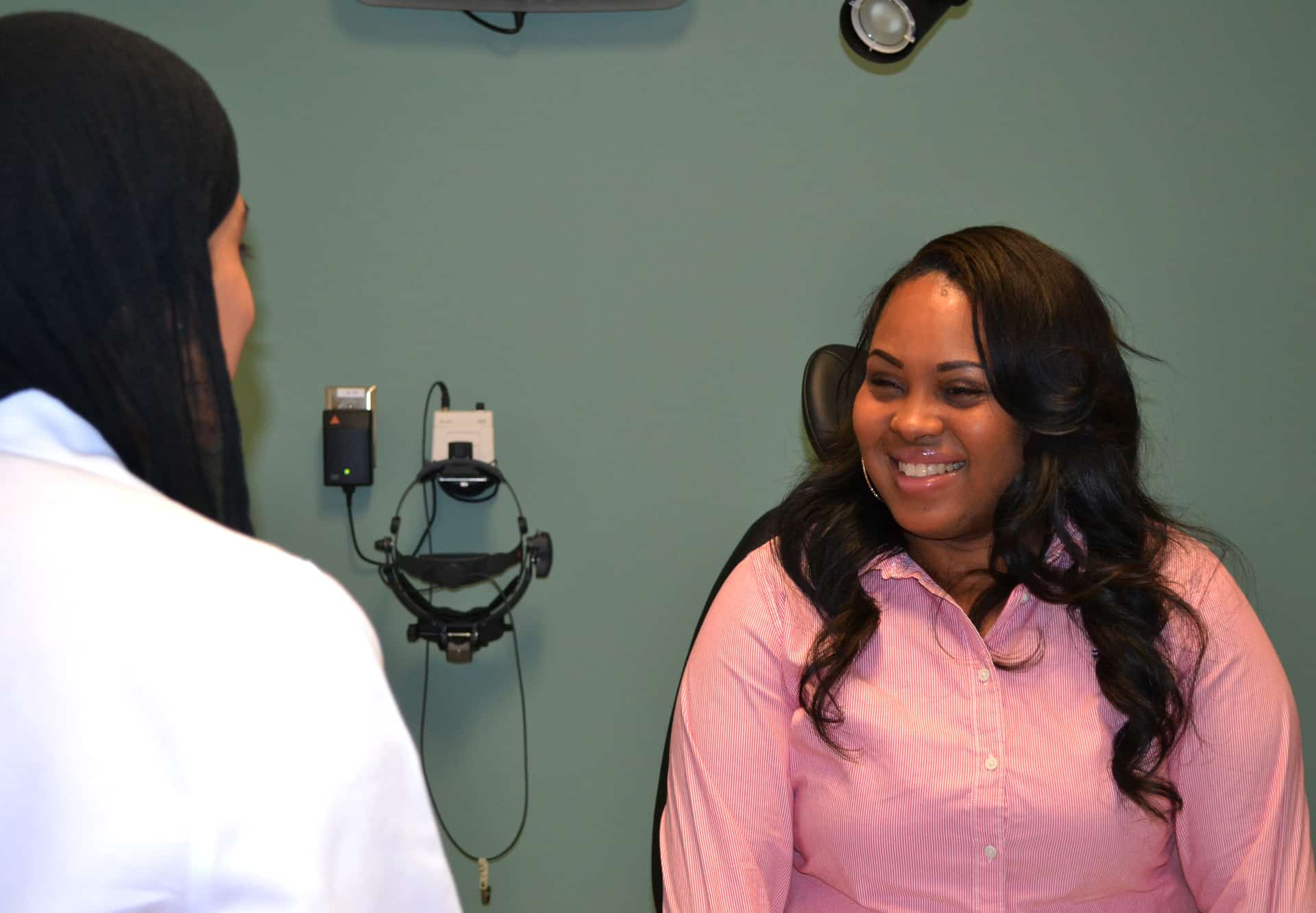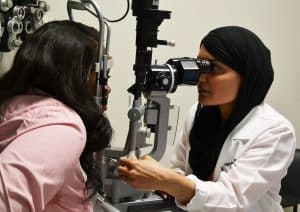UAMS Ophthalmologist Rids Little Rock Woman of Pain
| July 5, 2016 | There was no aspect of Zantiel Mooney’s life not affected by the excruciating pain she felt in her left eye.
Though she has temporarily lost sight in the eye, the work of UAMS cornea and uveitis specialist, Tayyeba Ali, M.D., took away the pain while ensuring she could keep the eye.
Mooney, 29, was diagnosed with keratoconus in 2009. She first noticed a problem at work when she had trouble seeing her computer screen. Keratoconus is a progressive disease in which the normally round cornea thins and begins to bulge into a cone-like shape. The curve causes astigmatism and nearsightedness.
Mooney underwent multiple corneal transplants on her left eye, but they were unable to restore her sight. Over time, she began to develop pain in the eye that eventually became so unbearable she considered having her eye removed.
“The pain was beyond anything,” said Mooney. “I had terrible headaches, I couldn’t eat, I couldn’t go outside. My husband couldn’t even watch television, because the light hurt my eyes.”
She was eventually referred to Ali, an assistant professor in the Department Ophthalmology in the College of Medicine, who sees patients at the UAMS Harvey & Bernice Jones Eye Institute.
“It’s very uncommon for patients with keratoconus to have pain,” said Ali. “It’s often a painless disease, but after seeing Zantiel’s eye and the amount of scarring, I understood.”
Ali also discovered that Mooney’s cornea was melting. Through two procedures, Ali was able to stop the disintegration of Mooney’s cornea and relieve her of pain. During the second procedure, Ali took the skin, called the conjunctiva, of Mooney’s left eye to cover the cornea.
After her eye healed, Mooney had a contact lens painted to wear in her left eye. Although she is not able to see out of the eye, she is out of pain, her eye doesn’t tear and her prosthesis gives the appearance of a normal eye. With the help of a contact lens, Mooney has 20/20 vision in her right eye, which is also affected by keratoconus.
Since the procedures with Ali, Mooney has not experienced the pain she did before and she’s been able to return to normal activities and hobbies. She credits both achievements to Ali and her commitment to helping her.
“I love Dr. Ali,” said Mooney. “She’s been wonderful ever since she took over my case.”
In dealing with high-risk patients like Mooney, Ali said it’s important to remember the overall goal, which differs from that in a normal cornea service case.
“For cornea specialists, we want 20/20 vision in every patient, but with this type of case that cannot be your goal,” said Ali. “Ultimately, one must focus on giving the patient functionality and a good quality of life.”

